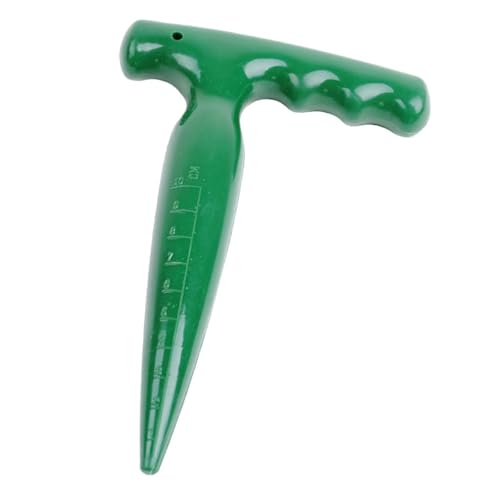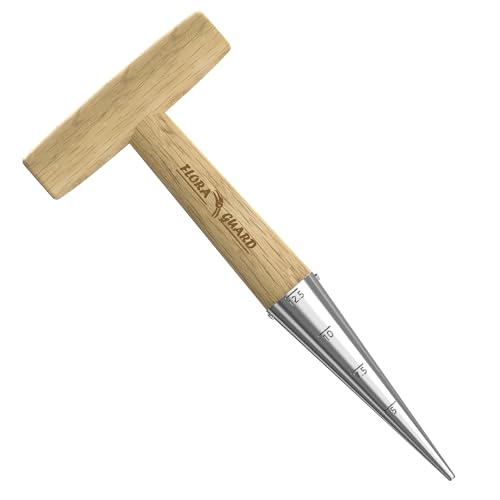What is a wooden dibber?
A wooden dibber, also known as a dibble or dibbler, is a garden tool used for making holes in soil or compost for planting seeds, seedlings, or bulbs. It is typically made of wood, with a pointed end for piercing the soil and a broader end for creating the planting hole.
Benefits of using a wooden dibber
One of the main benefits of using a wooden dibber is that it allows for precise planting depths, which can be crucial for ensuring optimal germination and growth of plants. Compared to using your hands or other tools, a wooden dibber can help you achieve consistent depths and spacing between plants.
Another advantage of using a wooden dibber is that it can help prevent damage to seedlings or roots. When planting with a spade or trowel, it can be easy to accidentally cut or bruise the delicate roots of plants. However, using a dibber allows you to create small, precise holes without disturbing the surrounding soil too much.
Additionally, using a wooden dibber can be easier on your hands and wrists. If you have arthritis, carpal tunnel syndrome, or other conditions that affect your grip or wrist strength, using a dibber can be a more comfortable way to plant your garden.
How to use a wooden dibber
Using a wooden dibber is fairly straightforward. Start by selecting the appropriate size dibber for the seeds or seedlings you plan to plant. If you’re planting seeds, look for a dibber with a smaller diameter; if you’re planting seedlings or bulbs, use a larger dibber.
Next, poke the pointed end of the dibber into the soil or compost where you want to plant your seed or seedling. Push down on the handle of the dibber to create a hole that is the appropriate depth for your plants.
If you’re planting multiple seeds or seedlings, use the dibber to create evenly spaced holes. Drop one seed or seedling into each hole and refill with soil or compost, gently pressing down to secure the plants in place.
Types of wooden dibbers
There are many different types of wooden dibbers available, each with their own unique features and benefits. Some dibbers have flat or angled ends, which can be useful for creating wider planting holes or for making indentations in the soil for positioning plants. Others have serrated edges for cutting through tough soil or compost.
You can also find dibbers in a range of sizes and shapes, from long and slender for planting bulbs to short and stubby for tight spaces or container gardens. Some wooden dibbers even feature decorative elements, such as painted handles or carved designs.
Conclusion: Why choose a wooden dibber for your garden?
Overall, using a wooden dibber can be a great way to ensure healthy, successful plant growth while minimizing damage to seedlings or soil. Whether you’re just starting out with gardening or you’re an experienced horticulturalist, a wooden dibber is a versatile tool that can help you achieve your planting goals with ease and precision.





